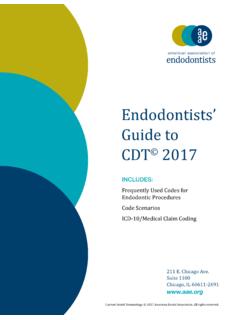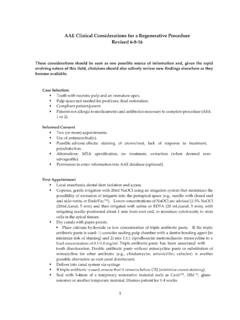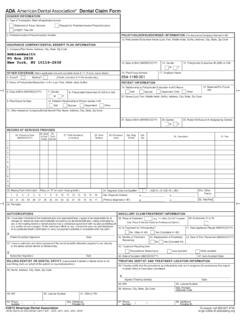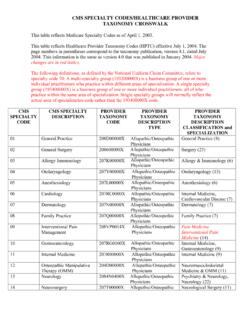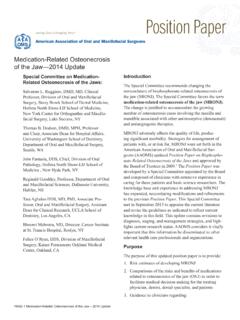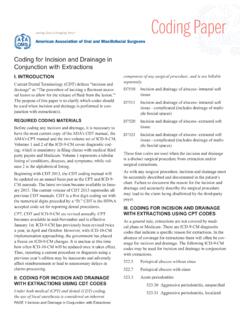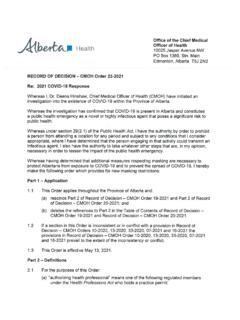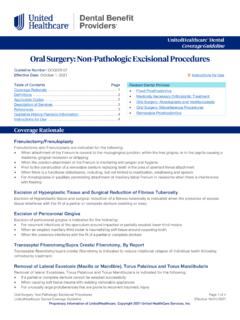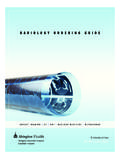Transcription of American Association of Oral and Maxillofacial Surgeons ...
1 1 American Association of oral and Maxillofacial Surgeons Position Paper on Bisphosphonate-Related Osteonecrosis of the Jaw 2009 Update Approved by the Board of Trustees January 2009 Task Force on Bisphosphonate-Related Osteonecrosis of the Jaws: Salvatore L. Ruggiero, DMD, MD, Associate Professor, Division of oral and Maxillofacial surgery , Stony Brook School of Dental Medicine, Attending, Long Island Jewish Medical Center, New Hyde Park, NY, New York Center for Orthognathic and Maxillofacial surgery , Lake Success, NY; Thomas B.
2 Dodson. DMD, MPH, Visiting oral and Maxillofacial Surgeon and Director, Center for Applied Clinical Investigations, Department of oral and Maxillofacial surgery , Massachusetts General Hospital, Associate Professor, Harvard School of Dental Medicine, Boston, MA; Leon A. Assael, DMD, Professor and Chairman, oral and Maxillofacial surgery , Oregon Health and Science University, Portland, OR; Regina Landesberg, DMD, PhD, Associate Professor, Columbia University, SDOS Division OMFS, New York, NY; Robert E. Marx, DDS, Professor of surgery and Chief, Division of oral and Maxillofacial surgery , University of Miami School of Medicine, Miami, FL; Bhoomi Mehrotra, MD, Division of Hematology-Medical Oncology, Long Island Jewish Medical Center, New Hyde Park, NY.
3 Bisphosphonate-related osteonecrosis of the jaw (BRONJ) adversely affects the quality of life, producing significant morbidity in afflicted patients. Strategies for management of patients with or at risk for BRONJ were set forth in the American Association of oral and Maxillofacial Surgeons (AAOMS) Position Paper on Bisphosphonate-Related Osteonecrosis of the Jaws (Position Paper) and approved by the Board of Trustees in September 2006 1. The Position Paper was developed by a Task Force appointed by the Board and composed of clinicians with extensive experience in caring for these patients and basic science researchers.
4 The knowledge base and experience in addressing BRONJ has expanded, necessitating modifications and refinements to the original Position Paper. The Task Force was re-convened in August 2008 to review the 2006 recommendations, appraise the current literature, and revise the Position Paper and recommendations, where indicated. This update contains revisions to diagnosis and staging and management strategies, and highlights the status of basic science research. AAOMS considers it vitally important that this information be disseminated to other dental and medical specialties.
5 Introduction The purpose of this updated position paper is to provide: Purpose 1. perspectives on the risk of developing BRONJ and the risks and benefits of bisphosphonates in order to facilitate medical decision-making of both the treating physician and the patient; 2 2. guidance to clinicians regarding the differential diagnosis of BRONJ in patients with a history of treatment with intravenous (IV) or oral bisphosphonates; and 3. guidance to clinicians on possible BRONJ prevention measures and management of patients with BRONJ based on the presenting stage of the disease.
6 Background Indications and benefits of bisphosphonate therapy Intravenous (IV) bisphosphonates are primarily used and effective in the treatment and management of cancer-related conditions including hypercalcemia of malignancy, skeletal-related events associated with bone metastases in the context of solid tumors such as breast cancer, prostate cancer and lung cancer, and management of lytic lesions in the setting of multiple myeloma. 2-13 While bisphosphonates have not been shown to improve cancer-specific survival, they have had a significant positive effect on the quality of life for patients with advanced cancer involving the skeleton.
7 Before 2001, pamidronate (Aredia ) was the only drug approved in the United States for treatment of metastatic bone disease. In 2002, zoledronic acid (Zometa ) was approved for this indication by the US Food and Drug Administration (FDA). 13 More recently, a once yearly infusion of zoledronate (Reclast ) and a parenteral formulation of ibandronate (Boniva ) administered every three months have been approved by the FDA for management of osteoporosis. 14 oral bisphosphonates are approved to treat osteoporosis and are frequently used to treat osteopenia as well.
8 15 They are also used for a variety of less common conditions such as Paget s disease of bone, and osteogenesis imperfecta of childhood. 16 -17 By far the most prevalent and common indication, however, is osteoporosis. 18-19 Osteoporosis may arise in the context of other diseases such as inflammatory bowel disease or primary biliary cirrhosis, as the result of medications, most commonly steroids, or as a consequence of postmenopausal aging. 20-22 Risks of bisphosphonate therapy oral and Maxillofacial Surgeons first recognized and reported cases of non-healing exposed bone in the Maxillofacial region in patients treated with IV bisphosphonates.
9 23-24 Since these initial reports, several case series and reviews have been published. 25-32 In September 2004, Novartis, the manufacturer of the IV bisphosphonates pamidronate (Aredia ) and zoledronic acid (Zometa ), notified healthcare professionals of additions to the labeling of these products, which provided cautionary language related to the development of osteonecrosis of the jaws. 33 This was followed in 2005 by a broader drug class warning of this complication for all bisphosphonates including the oral preparations.
10 34-35 See Appendix 1 for list of bisphosphonate medications that are currently available in the United States. Epidemiologic studies have established a compelling, albeit circumstantial, Association between IV bisphosphonates and BRONJ in the setting of malignant disease. An Association between IV bisphosphonate exposure and BRONJ may be hypothesized based on the following observations: 1) a positive correlation between bisphosphonate potency and risk for developing BRONJ; 2) a negative correlation between bisphosphonate potency and duration of bisphosphonate exposure prior to developing BRONJ; and 3) a positive correlation between duration of bisphosphonate exposure and developing BRONJ.
